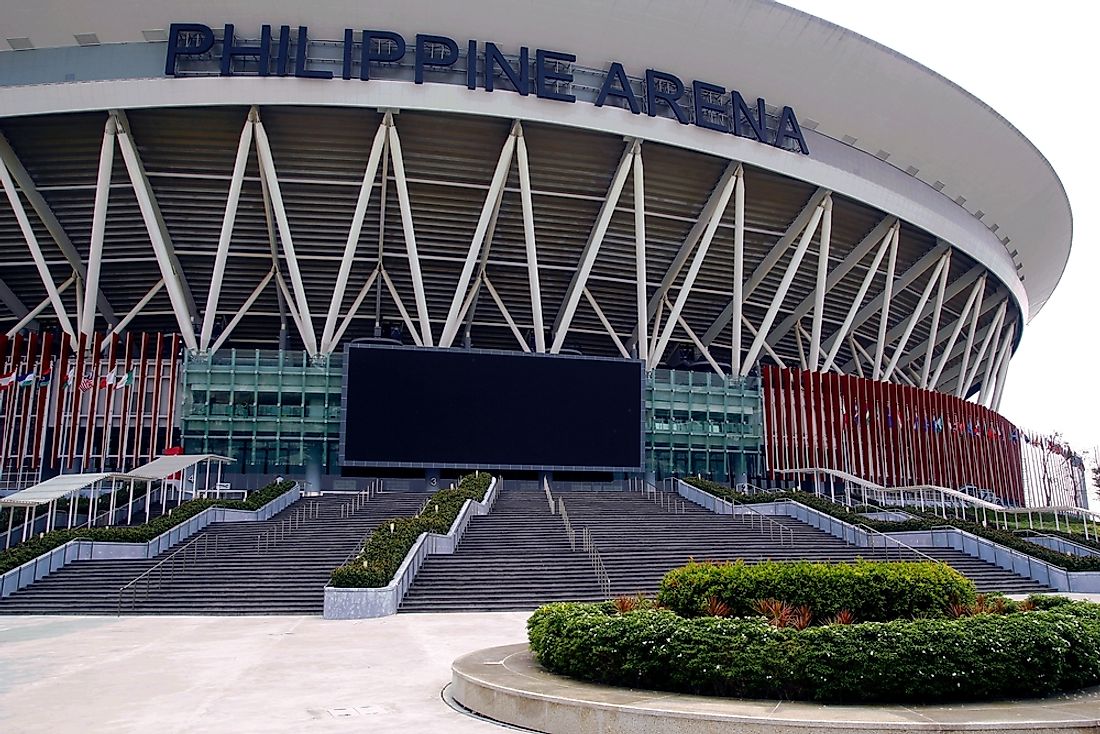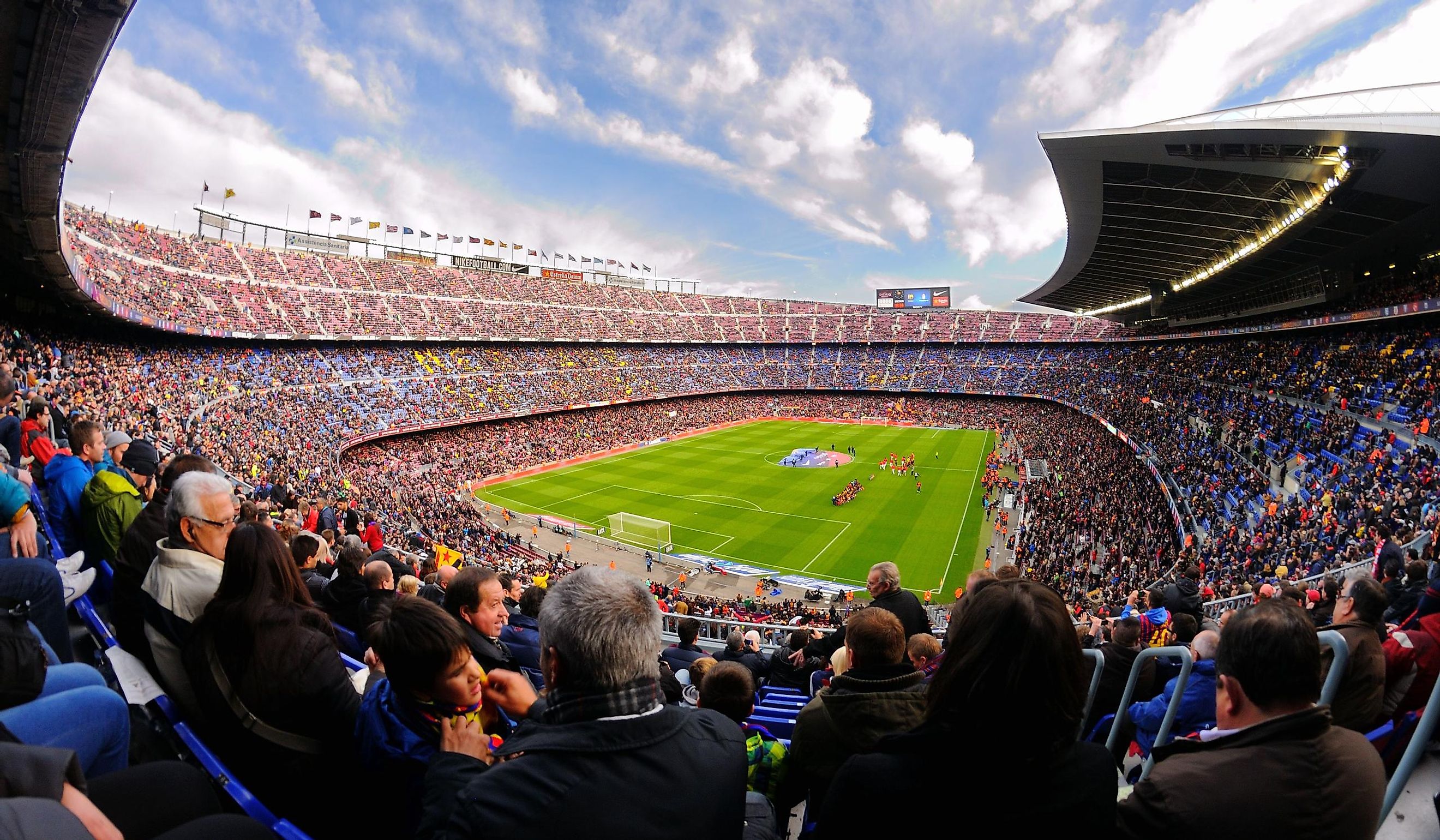
The 10 Largest Soccer Stadiums In The World
Football, also known as soccer (primarily in North America and Australia), is the most popular sport on Earth. Enjoyed by billions of people in every nation around the globe, football took the world by storm during the early 20th century and has not let go since. Both professional and amateur numbers are in the thousands and can be found with relative ease no matter which country you find yourself in.
Enormous stadiums dedicated to football have been constructed all over the world. Sometimes costing hundreds of millions of dollars to make, the grandeur and spectacle of having more than 100,000 passionate fans packed into the same arena, all cheering for their favorite club, is impossible to describe in words alone. These modern-day Colosseums are a testament to the passion and unbreaking love that so many people have towards the game of football.
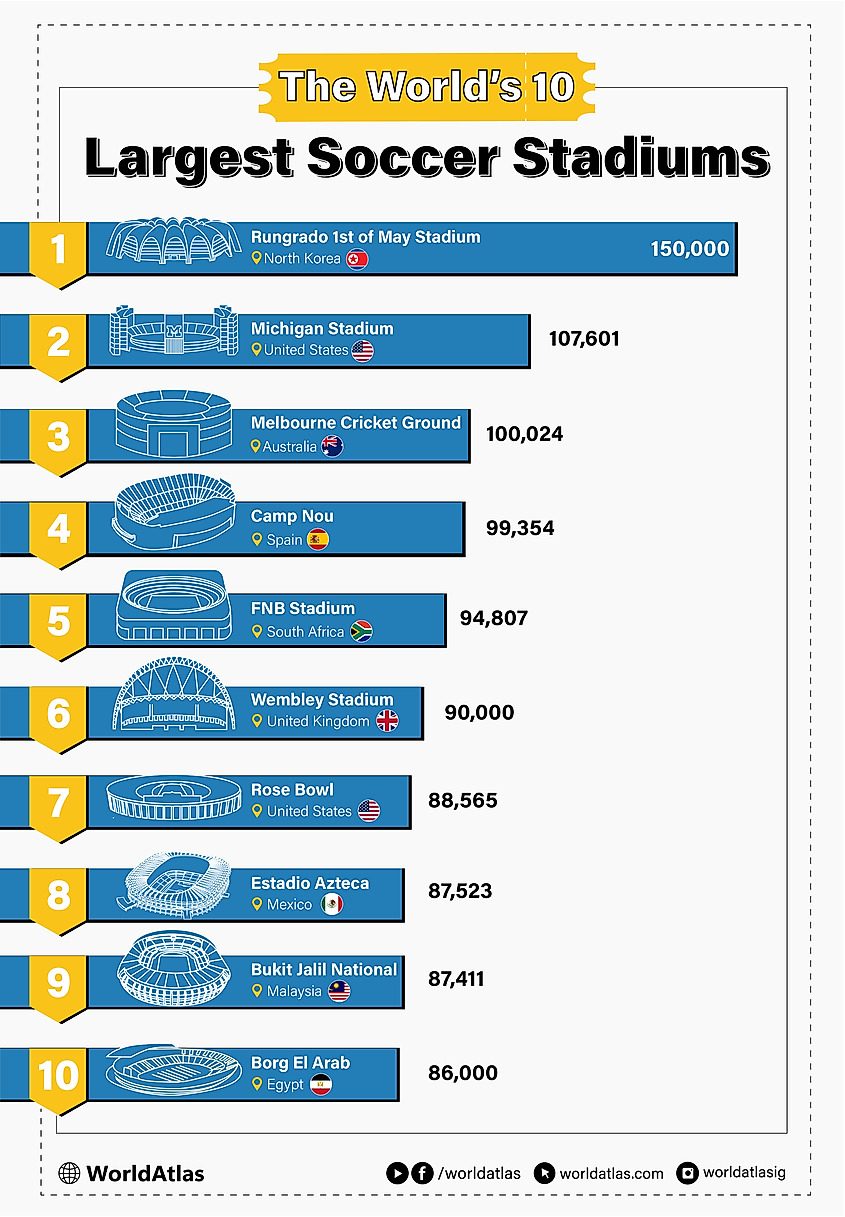
1. Rungrado 1st Of May Stadium, North Korea | Capacity: 150,000
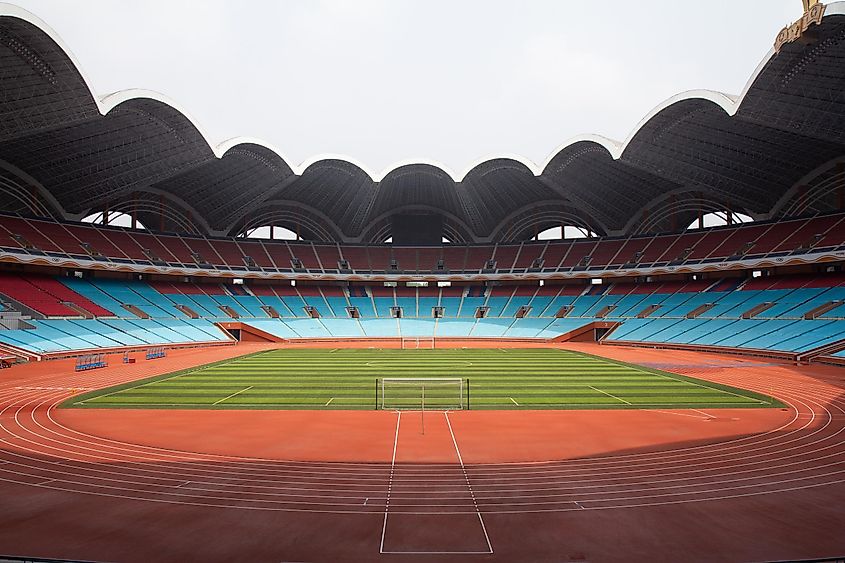
Surprising to many, the largest football stadium in the world can be found in North Korea. This nation is famously quite guarded against the outside world, to say the least. Despite closing itself off, football is just as big in North Korea as it is anywhere else.
The stadium was constructed in 1989 in response to the success of the 1988 Olympics, which were held in the neighboring nation of South Korea. The stadium was officially unveiled on May 1st, which also falls on Labour Day. The most important events held here have included the North Korean football team games as well as the qualification round for the 2018 Asian Football Confederation Men's Under 23 Asian Cup (AFC U-23).
Spanning approximately 2,152,782 square feet, the Rungrado 1st of May Stadium features over 1,300 rooms and 80 entrances. Its design, inspired by a parachute or flower, includes a roof made of 16 arches that stand 197 feet above the ground.
2. Michigan Stadium, United States | Capacity: 107,601
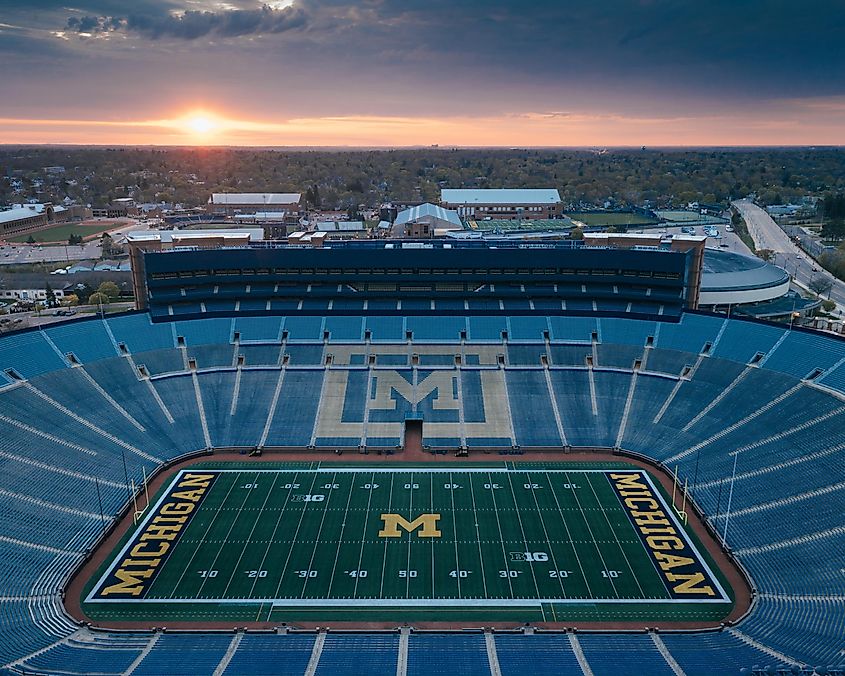
Nicknamed "The Big House," this architectural marvel is in Ann Arbor at the University of Michigan. Constructed in 1927, the Michigan Stadium originally had a seating capacity of only 72,000 people. However, The Big House received 40,000 more seats during renovations in 2010. Though its official seating capacity is 107,601, it once hosted 115,109 attendants in 2013 for a match between the University of Michigan and the University of Notre Dame.
The stadium was built with American football in mind, but traditional football is still played here. The International Champions Cup (ICC) has been hosted here numerous times. Despite the local residents being enamored with American football, the beautiful game still receives plenty of spectators every time it is played at Michigan Stadium.
Other notable events that have been held at Michigan Stadium include the National Hockey League's 2014 Winter Classic, which was held outside in blowing freezing temperatures. Played between the Toronto Maple Leafs and Detroit Red Wings, this game remains the record holder for the highest attendance for any hockey game at 105,000.
3. Melbourne Cricket Ground, Australia | Capacity: 100,024
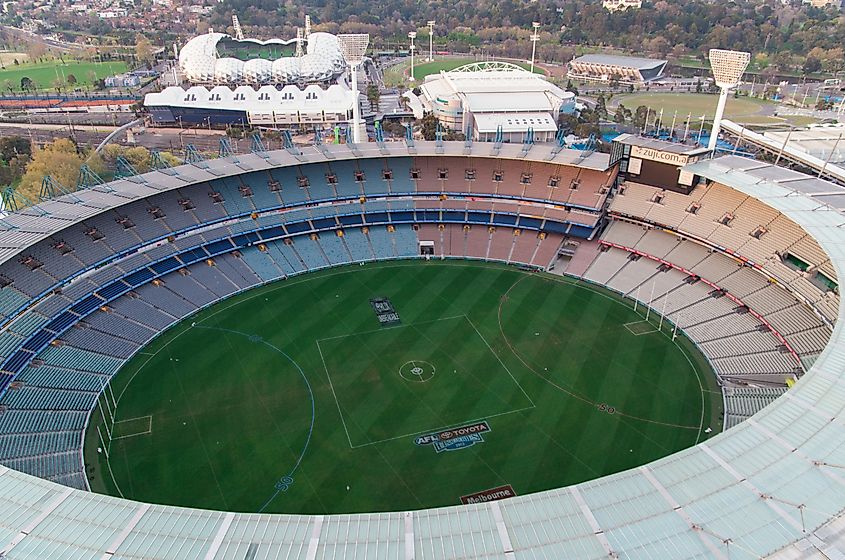
Sometimes simply referred to as "the Ground," the Melbourne Cricket Ground can trace its history back to before Australia was even a country in 1853. This colossus of a stadium not only remains a huge part of Melbourne's identity but is seen as a point of national pride for all Australians.
The capacity includes 95,000 seats and approximately 5,000 spaces for standing room. Today, the Ground is a popular venue for international cricket games, tennis, rugby, and, of course, football. While rugby and Australian rules football still reign supreme in terms of popularity, traditional football still sees much fanfare, especially the men's national team.
The 1956 Olympic Games, the 1992 World Cup final, and the 2006 Commonwealth Games were all hosted at the Melbourne Cricket Ground. Not to mention dozens of world-famous performers and musicians such as U2, Paul McCartney, and Madonna.
4. Camp Nou, Spain | Capacity: 99,354

Constructed in 1955, Camp Nou was designed as a home for the legendary football team FC Barcelona. The first game ever hosted in the arena was between Barcelona and Warsaw in front of 90,000 spectators.
Today, this football stadium is the largest of its kind in Europe, capable of seating 99,354 people. However, before seating and standing restrictions came into place, Camp Nou once held 120,000 people during a match at the 1982 FIFA World Cup.
The stadium serves as FC Barcelona's official home and as a venue for other athletic events. FC Barcelona has created one of the most impressive legacies of any football club in the world. They have won multiple championships and hosted some of the best athletes to ever play the game, such as Ronaldinho, Xavi, and Lionel Messi. The fandom for this club is not just within Barcelona itself but can be found around the world.
5. First National Bank Stadium, South Africa | Capacity: 94,807
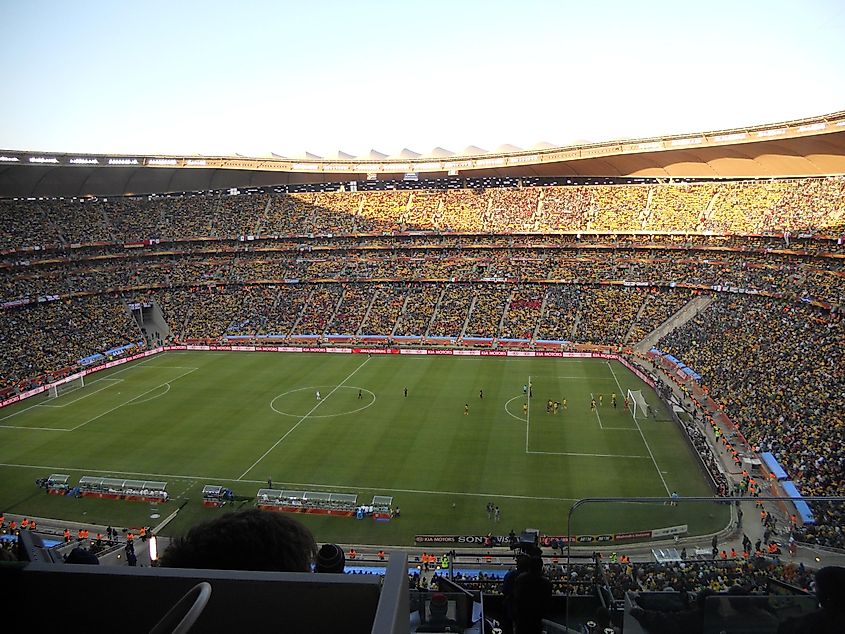
The First National Bank (FNB) Stadium in Johannesburg goes by many names. A popular name for the arena is "Soccer City," whereas others refer to the arena as "The Calabash" due to its resemblance to an African-style pot or gourd.
Built between 1986 and 1989, The Calabash could only hold 80,000 people within its space. However, in 2009, the stadium upgraded its seat capacity to around 95,000 for the sake of the 2010 World Cup. This World Cup, for many, was one of the best in recent memory.
The stadium still sees plenty of use today. South Africa's national football team and the South African Premier League team, the Kaizer Chiefs, often play their games at the FNB Stadium.
6. Wembley Stadium, United Kingdom | Capacity: 90,000

Known as the national stadium of England, Wembley Stadium sits in London. Though it is the sixth-largest football stadium in the world, it is the largest sports venue in the UK at a 90,000-seat capacity. Originally built in 1923, the stadium was reborn in 2007 with all the bells and whistles that one would expect from a modern state-of-the-art stadium of this caliber.
The modern reincarnation of Wembley Stadium is nothing short of a marvel. The stadium is massive, complete with a sliding roof to protect attendees from the elements. Wembley also contains a tall arch that spans about 436 feet at the north stand, which is easily visible across London. Additionally, for patron's leisure, Wembley Stadium has 34 bars, eight restaurants, and 688 food and beverage services.
Wembley Stadium sees plenty of use within the English Premier League. It was once home to one of the biggest teams in the organization, the Tottenham Hotspurs. Other events are played here on a regular basis, such as concerts, boxing, and international football tournaments.
7. Rose Bowl, United States | Capacity: 87,565
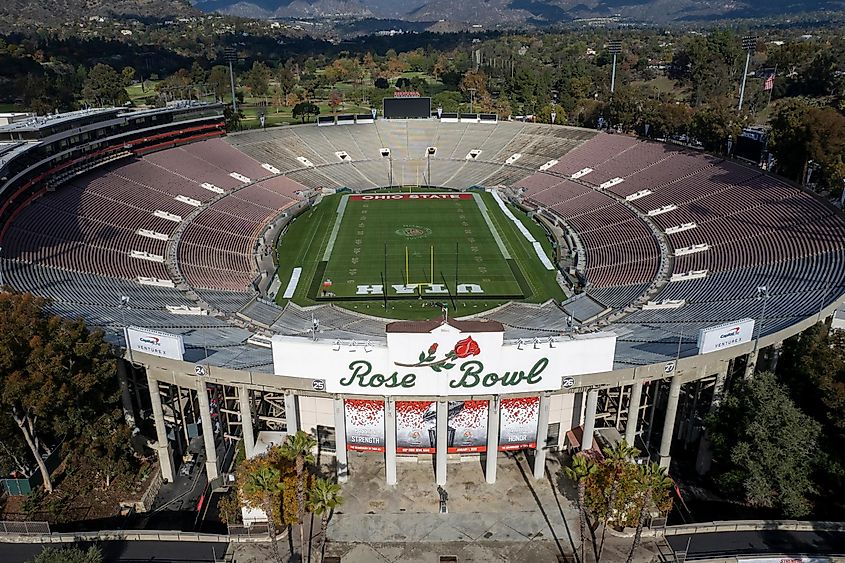
Located in Pasadena, California, the Rose Bowl is the second largest stadium in the United States, only behind The Big House in Michigan. First constructed in 1922, the Rose Bowl is best known as being a venue for American college football. Each year, on New Year's Day, a massive game is hosted at the Rose Bowl as a way to kick off the new year.
Even though it was made with college football in mind, it is still used regularly for traditional football. The stadium was the host venue for the 1994 FIFA World Cup Final, the 1999 FIFA Women's World Cup Final, and the 1984 Olympic Soccer Gold Medal Match. Expanding over the years, the Rose Bowl currently has a maximum capacity of 87,565 fans.
The last major renovations were made in 2014. Despite how often the arena is still used, there are currently no new plans to expand or improve the stadium at this time aside from a few minor changes to the aesthetics.
8. Estadio Azteca, Mexico | Capacity: 87,523
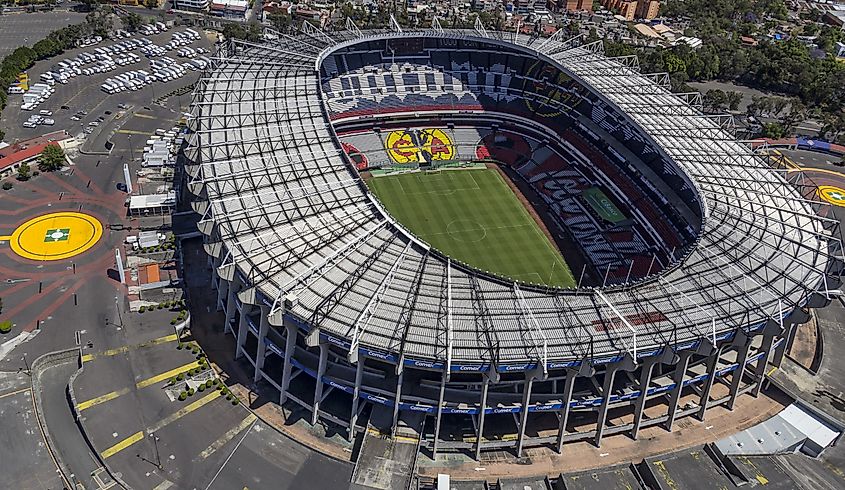
Found in the heart of Mexico City, the Estadio Azteca is one of the largest sports stadiums in the world, with a current capacity of 87,523. Constructed in 1962 and opened in 1966, Spanish, English, French, and Italian stadium styles influenced the Estadio Azteca's design.
In the past, Estadio Azteca staged events such as the 1970 and 1986 FIFA World Cup final matches and still sees use in international games. In 2026, it will also host the 2026 FIFA World Cup games. Today, it serves as the headquarters of Mexico's national football team, El Tri, as well as Club America, the local team.
For years, there were serious concerns about the overall appearance and dilapidated nature of the stadium. Recently, serious efforts have been made to bring this legendary stadium up to date with world standards. The stadium has now evolved with the times to include additions such as ground-level suites, jumbotrons, and a tracking camera to cover the field during matches.
9. Bukit Jalil National Stadium, Malaysia | Capacity: 87,411
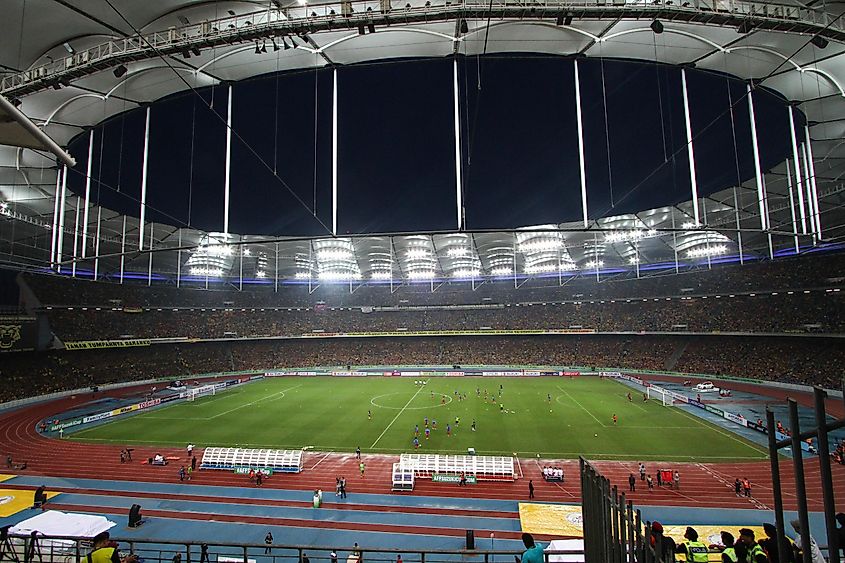
Avid football (and sports) fans can find the Bukit Jalil National Stadium in Kuala Lumpur, Malaysia, in the National Sports Complex. Constructed in 1995, this stadium spans about 3,775,150 square feet and includes 20 corporate suites for events and meetings.
Boasting a seating capacity of 87,411, the Malaysian National Football Team often plays its games at this huge stadium. However, Bukit Jalil also serves as a multi-purpose venue, hosting sporting events like the 1998 Commonwealth Games, the 2003 FA Premier League Asia Cup, and the 2017 Southeast Asian Games.
Football is not the only spectacle on stage here, either. Dozens of concerts from international artists such as Ed Sheeran have been hosted in this majestic arena as well.
10. Borg El Arab Stadium, Egypt | Capacity: 86,000
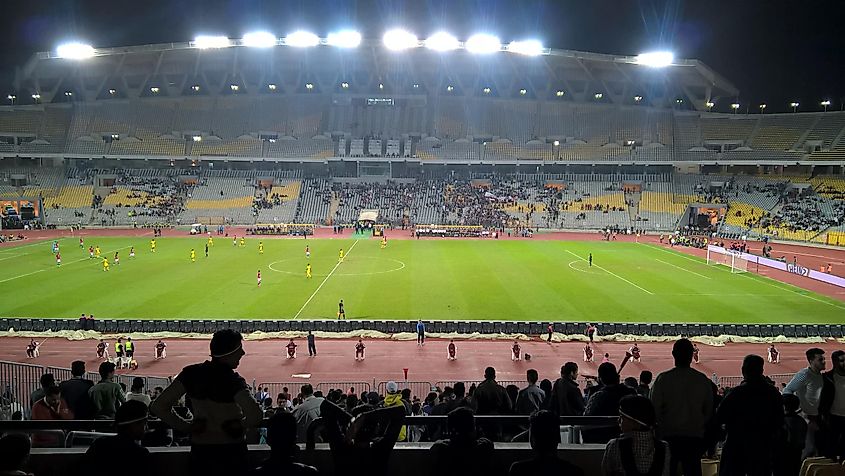
Located along the Egyptian coast in the port city of Alexandria is the stunning Borg El Arab Stadium. Also known as the El-Geish Stadium, the Borg El Arab Stadium is one of the largest football stadiums in the world, boasting a seating capacity of 86,000. Originally built as a project during its bid to host the 2010 FIFA World Cup, it officially opened its doors in 2006. Even though Egypt never got a chance to host the games, in the end, they were gifted with one of the greatest arenas in the world to watch football.
The size of the stadium is only the beginning. The amenities that come attached to the arena are nothing short of spectacular. This includes a parking lot that can hold 5,000 vehicles and 200 buses. It is equipped with 136 electronic entrances, which allow 800 people to enter through them per minute. The gigantic stadium also comes with 39 cafeterias and an on-site hotel that can accommodate up to 200 guests.
This marvelous stadium is largely used by the Egyptian Premier League, but it has also witnessed its fair share of international games during the lead-up to the FIFA World Cup.
These ten stadiums remain some of the most identifiable and celebrated shrines to the game of football around the world, spanning across continents and epitomizing the global impact and enduring appeal of football. They are not just architectural marvels but also cultural landmarks. No matter their original purpose, what really brings fans closer to the game is the passion and atmosphere that has captured the attention of billions of supporters across the globe.
| Stadium | Nation | Capacity |
|---|---|---|
| Rungrado 1st of May Stadium | North Korea | 150,000 |
| Michigan Stadium | United States | 107,601 |
| Melbourne Cricket Ground | Australia | 100,024 |
| Camp Nou | Spain | 99,354 |
| FNB Stadium | South Africa | 94,807 |
| Wembley Stadium | United Kingdom | 90,000 |
| Rose Bowl | United States | 88,565 |
| Estadio Azteca | Mexico | 87,523 |
| Bukit Jalil National Stadium | Malaysia | 87,411 |
| Borg El Arab Stadium | Egypt | 86,000 |



